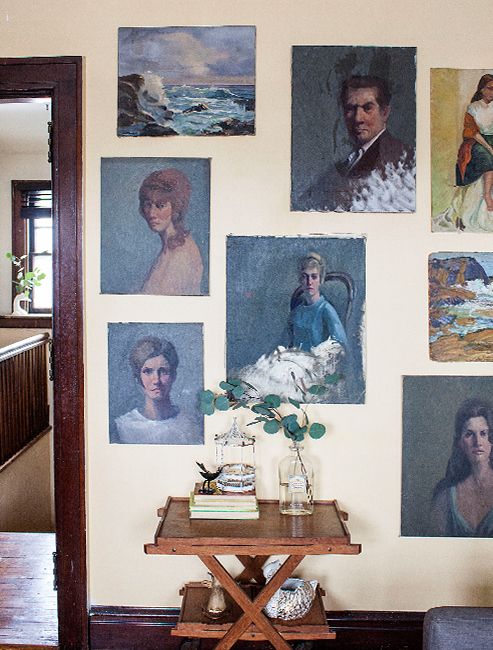
During a sorting session with a client, we were reviewing their art and marking what was going with them and what was going away. She had a few of large oil paintings of fore bearers, dating back to the early 1800s. Our client looked at them with a smile and a tiny sigh, and said, “I guess we’ll keep the Old Pusses.”
And I’m glad they did. They were lovely paintings and they had space for them in their future home. But not everyone has the room. And not everyone has the desire to display paintings and photographs of previous generations. All of which raises the question: what do you do with Old Pusses?
The first thing you do is eliminate guilt from the decision making. Whom and what you display in your house is up to you. You are under zero obligation to hang a large wedding photograph of your great grandparents. The room you have in your heart for love of family history is infinite. The wall space you have for hanging art in your home is not. You should to surround yourself art that makes you happy. And it might not be that wedding photo.

The second thing you do is document the people is in the portrait. Take a photo of it, add notes for future generations. You may not want the photo or painting, but that doesn’t mean you don’t want to preserve that part of your family story.
The third thing you do is check with other family members to see if anyone else wants old portraits or photos. I received a box of old family photos from my last remaining auntie years after my mother had passed away, and there were photos in there I had never seen. I am so happy to have those.
If you decide to let those portraits go, the last thing you do is decide how you want to dispose of them. Paintings and photographs that may have been done by a noted artist may have resale value. More common photographs and paintings have decorative value and might be desirable to artists and designers. Those may have resale or donation value. Common photographs that are not of great age or great interest or are only one of multiple copies can often be disposed of.
People are often uncomfortable at the idea of a painting of their grandmother hanging someone else’s house or a restaurant. But how often do you look at a portrait of someone you don’t know and find yourself charmed by their smile or be intrigued by their clothing? Giving up art of your predecessors so they can be appreciated by others is not a bad thing. What you do with your Old Pusses is up to you; do what you can feel good about at the end of the day.
Wondering how people decorate with vintage portraits or looking for inspiration on new way to showcase your family photos? Here’s some places to start:
Vintage Unscripted has a blog post of ideas for decorating with relatives, real or imagined.

Design Sponge gathered together 14 rooms where vintage portraits shine.

And Chairish captured interior designer Michelle Gage’s hints for decorating with vintage portraits.



 If you’re thinking about downsizing and rightfully feeling overwhelmed, you will find it beyond belief that people from across the country would gleefully plunk down airfare, hotel and conference fees to talk and think about nothing but downsizing for four straight days. But you’re not a move manager, and you’ve never been to the annual National Association of Senior Move Managers (NASMM) conference. The NASMM conference is such a magical event that not only do members flock to it, they willingly get up for sessions at 7:30 am and talk late into the night. But that’s what happens when a big group of people who are passionate about what they do get together.
If you’re thinking about downsizing and rightfully feeling overwhelmed, you will find it beyond belief that people from across the country would gleefully plunk down airfare, hotel and conference fees to talk and think about nothing but downsizing for four straight days. But you’re not a move manager, and you’ve never been to the annual National Association of Senior Move Managers (NASMM) conference. The NASMM conference is such a magical event that not only do members flock to it, they willingly get up for sessions at 7:30 am and talk late into the night. But that’s what happens when a big group of people who are passionate about what they do get together.



